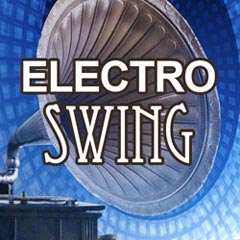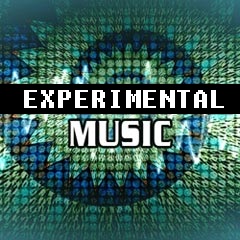Minimal
ON AIR - PROGRAMMING
Primordial and pure sounds, hypnotic and repetitive with different aims, to reason, to dance, to elude, to illustrate. Music has been used as a form of expression for centuries. Its power to evoke emotion and create ambience is what draws people to it. A new trend has recently appeared Ð minimal music. This genre emphasizes simplicity and minimalism in the melody, while still maintaining the sheer ecstatic joy of music. Minimal music uses less musical elements, which removes distraction and goes further into connecting with its audience. It creates an encompassing atmosphere that was once only imagined from classical scores that flow minimally with gentle progressions. With minimal music artists are making an attempt to capture this timeless emotion anew Ð creating a wholly serene experience for their listeners. Minimal music is a New York genre that uses limited or minimal music material to compose electronic or traditional songs.
The Power of Minimal Music: Primordial and Pure Sounds
Music is an essential part of our lives. It has always been used as a form of expression, a way to connect with others, and a means of telling stories. One of the newest trends in the music industry is minimal music. This genre emphasizes simplicity and minimalism in the melody, yet still maintains the sheer ecstatic joy of music. Minimal music uses fewer musical elements, which removes distractions and goes further into connecting with its audience. It creates a timeless emotion and a wholly serene experience for their listeners. Let's dive in and explore the power of minimal music!
Minimal music originated in New York in the 1960s. This genre uses limited or minimal music material to compose both traditional and electronic songs. It consists of repetitive patterns and simple melodic structures. This repetition is what creates the hypnotic effect of minimal music, allowing the listener to get lost in the music and fully immerse themselves in the listening experience. One of the key attributes of minimal music is its ability to be used for various purposes such as dance, to reason, to elude, and to illustrate. Also, a minimal composition can be played for hours without losing its effect.
One of the most fascinating things about minimal music is its power to evoke emotions. The repetitive nature of the music can create a meditative state, allowing the listener's mind to focus and relax. Listening to minimal music can transport the listener to a different world, a place where they can escape the chaos of everyday life. It can also evoke a sense of nostalgia, as minimal music often harkens back to classical scores that focus on gentle progressions.
Another great attribute of minimal music is the variety of instruments used. Some popular instruments that are utilized in minimal music are the piano, synthesizer, guitar, cello, and drums. These instruments are often used in conjunction with electronic effects and loops that create unique sounds and add depth to the compositions. Minimal music is also highly influenced by jazz and classical music. This influence is evident in the slow and steady development of the melodies and the use of improvisation.
Minimal music has become the new darling of independent music scenes and underground clubs. Today, you can find multiple minimal compositions and performances by artists and DJs worldwide. Famous minimal artists include La Monte Young, Philip Glass and Steve Reich. At underground clubs like Berghain in Berlin, minimal techno reigns supreme, with DJs cutting and looping extended samples of sounds and beats to create entrancing and dance-worthy compositions.
In conclusion, minimal music offers a unique listening experience that is both meditative and hypnotic. With fewer musical elements, minimal music creates a serene environment that allows the listener to fully immerse themselves in the music. Its ability to evoke emotions and transport the listener to a different world is what makes minimal music so intriguing. Its recent popularity demonstrates that people are looking for something new and different, and minimal music offers just that. So, what are you waiting for? Let's get lost in the primordial and pure sounds of minimal music!
The Power of Minimal Music: Primordial and Pure Sounds
Music is an essential part of our lives. It has always been used as a form of expression, a way to connect with others, and a means of telling stories. One of the newest trends in the music industry is minimal music. This genre emphasizes simplicity and minimalism in the melody, yet still maintains the sheer ecstatic joy of music. Minimal music uses fewer musical elements, which removes distractions and goes further into connecting with its audience. It creates a timeless emotion and a wholly serene experience for their listeners. Let's dive in and explore the power of minimal music!
Minimal music originated in New York in the 1960s. This genre uses limited or minimal music material to compose both traditional and electronic songs. It consists of repetitive patterns and simple melodic structures. This repetition is what creates the hypnotic effect of minimal music, allowing the listener to get lost in the music and fully immerse themselves in the listening experience. One of the key attributes of minimal music is its ability to be used for various purposes such as dance, to reason, to elude, and to illustrate. Also, a minimal composition can be played for hours without losing its effect.
One of the most fascinating things about minimal music is its power to evoke emotions. The repetitive nature of the music can create a meditative state, allowing the listener's mind to focus and relax. Listening to minimal music can transport the listener to a different world, a place where they can escape the chaos of everyday life. It can also evoke a sense of nostalgia, as minimal music often harkens back to classical scores that focus on gentle progressions.
Another great attribute of minimal music is the variety of instruments used. Some popular instruments that are utilized in minimal music are the piano, synthesizer, guitar, cello, and drums. These instruments are often used in conjunction with electronic effects and loops that create unique sounds and add depth to the compositions. Minimal music is also highly influenced by jazz and classical music. This influence is evident in the slow and steady development of the melodies and the use of improvisation.
Minimal music has become the new darling of independent music scenes and underground clubs. Today, you can find multiple minimal compositions and performances by artists and DJs worldwide. Famous minimal artists include La Monte Young, Philip Glass and Steve Reich. At underground clubs like Berghain in Berlin, minimal techno reigns supreme, with DJs cutting and looping extended samples of sounds and beats to create entrancing and dance-worthy compositions.
In conclusion, minimal music offers a unique listening experience that is both meditative and hypnotic. With fewer musical elements, minimal music creates a serene environment that allows the listener to fully immerse themselves in the music. Its ability to evoke emotions and transport the listener to a different world is what makes minimal music so intriguing. Its recent popularity demonstrates that people are looking for something new and different, and minimal music offers just that. So, what are you waiting for? Let's get lost in the primordial and pure sounds of minimal music!
What are you thinking about?







